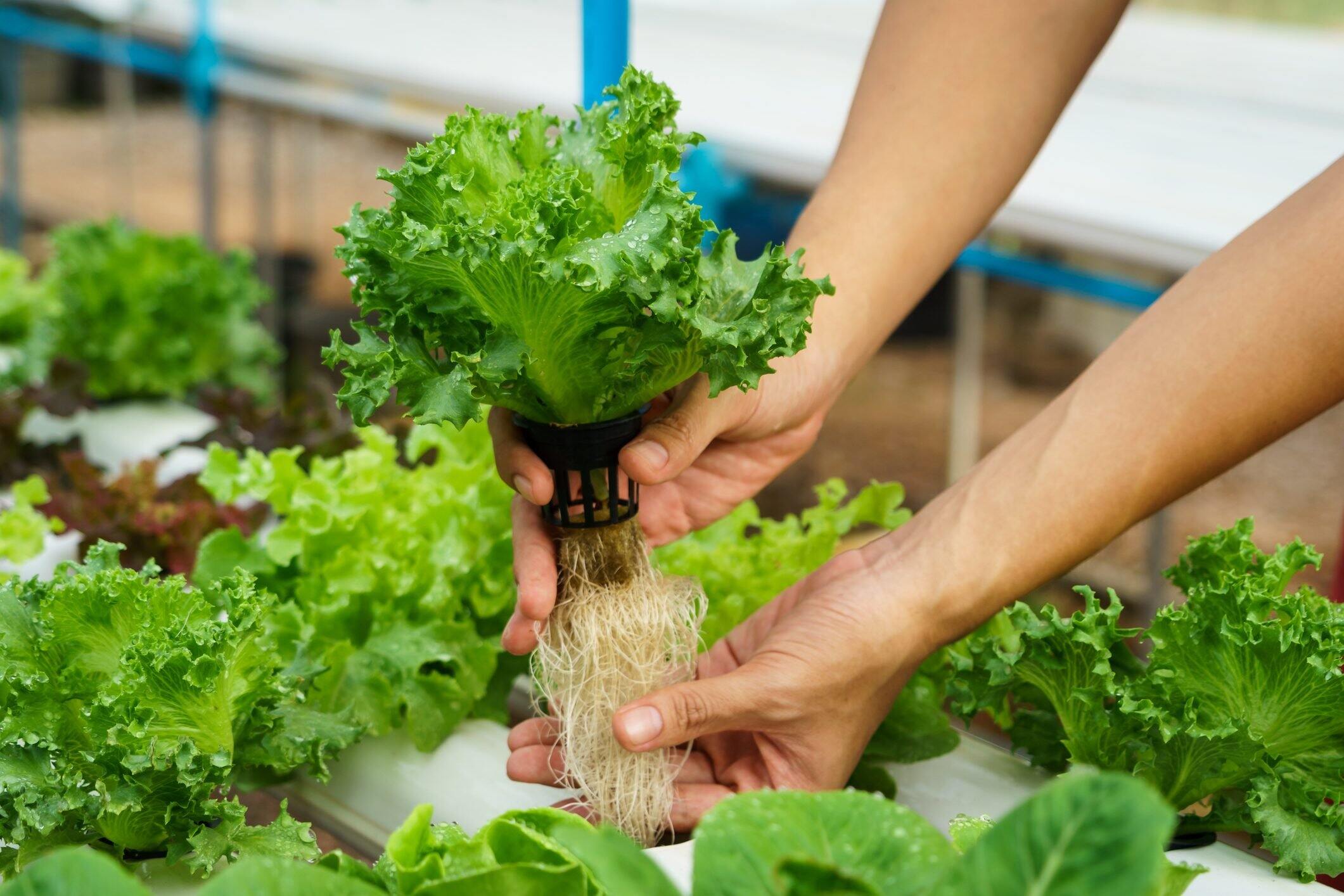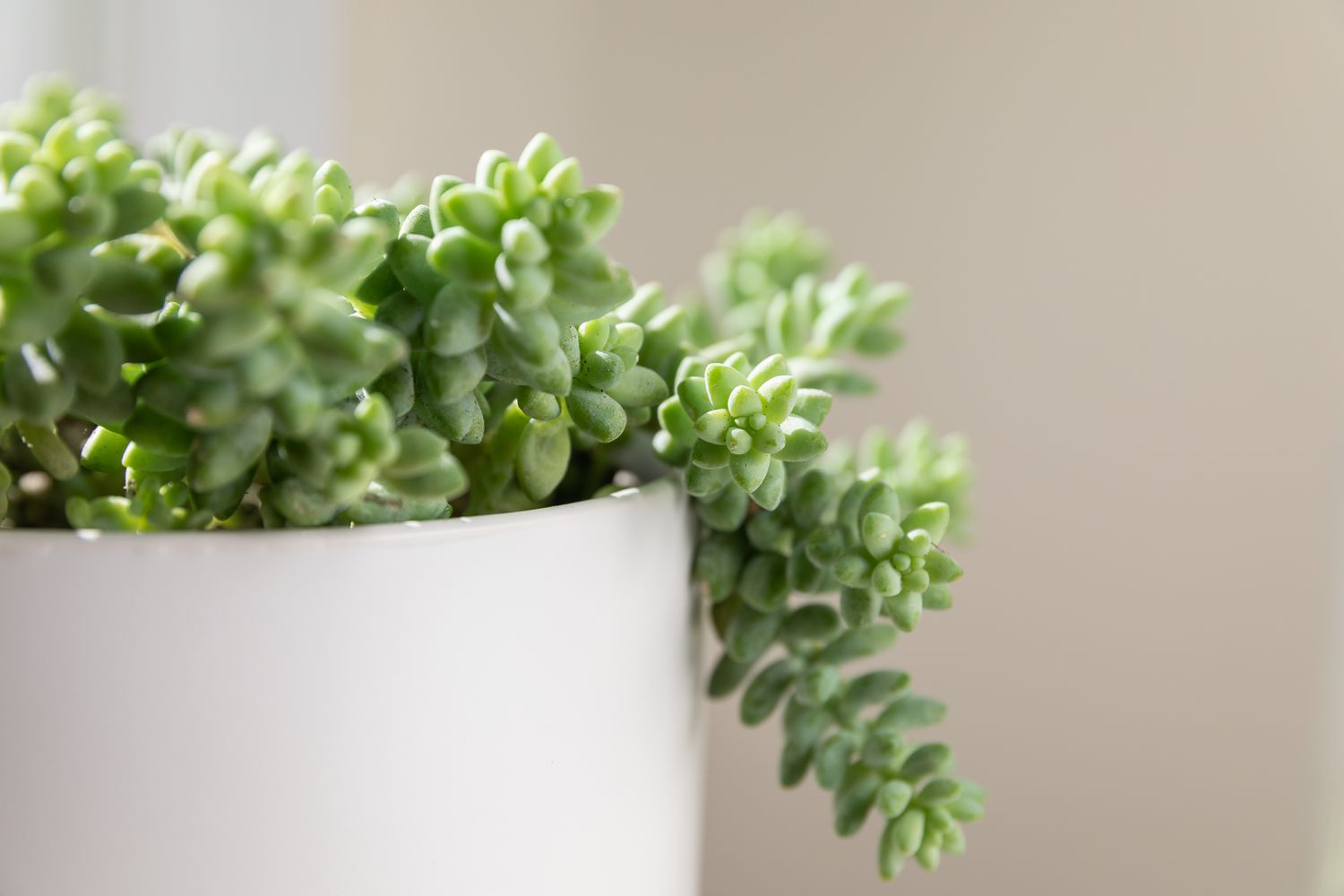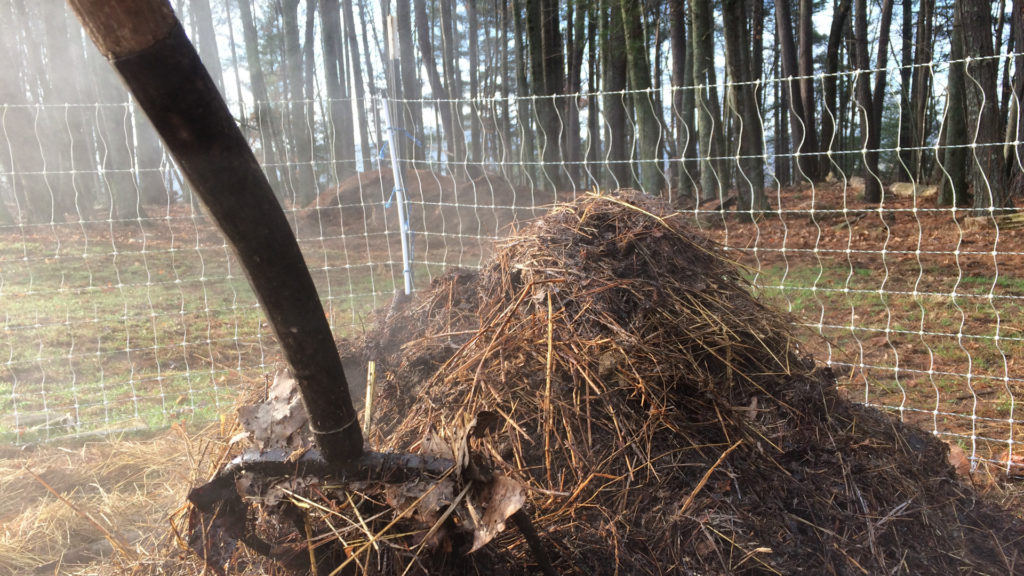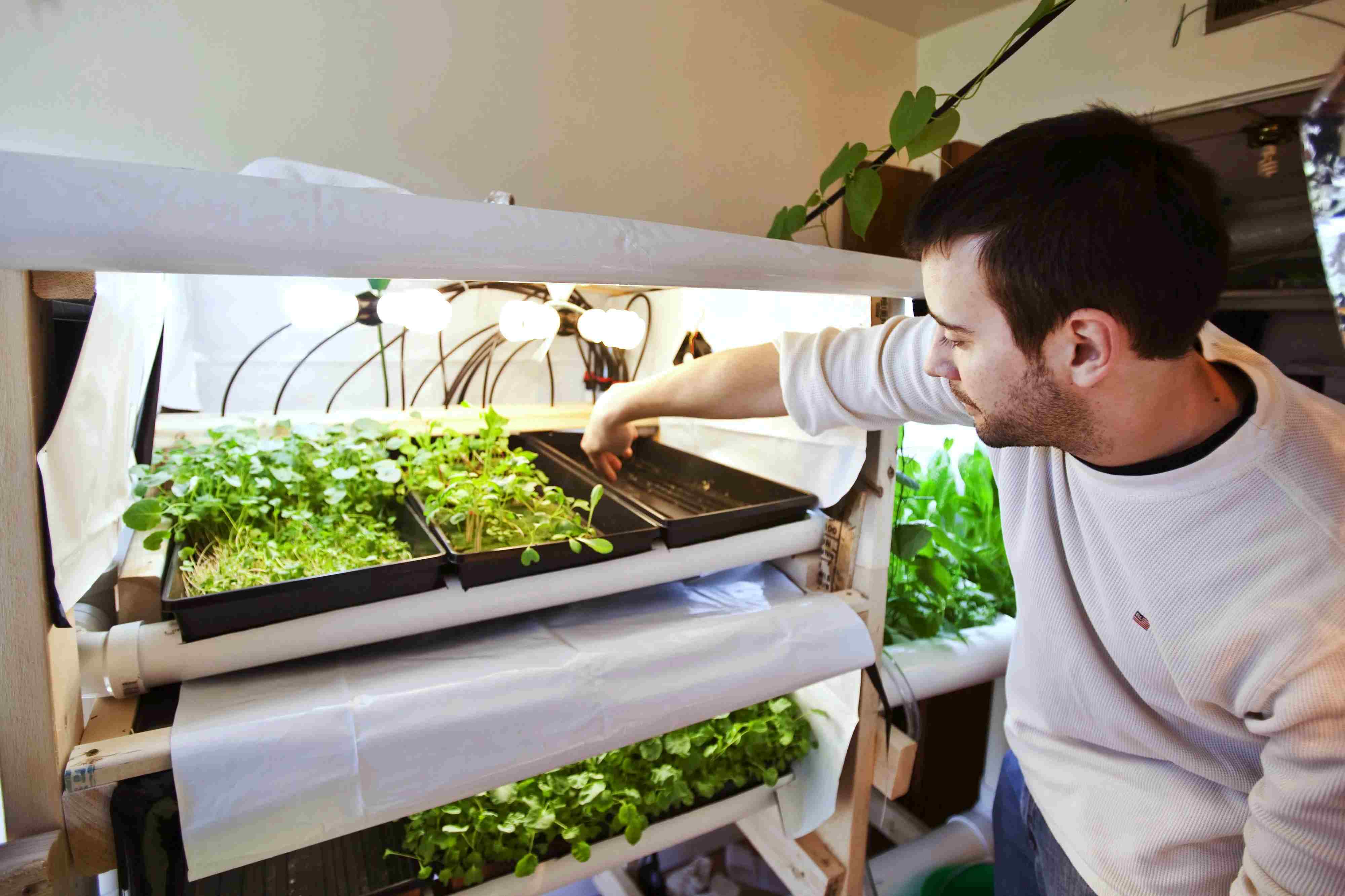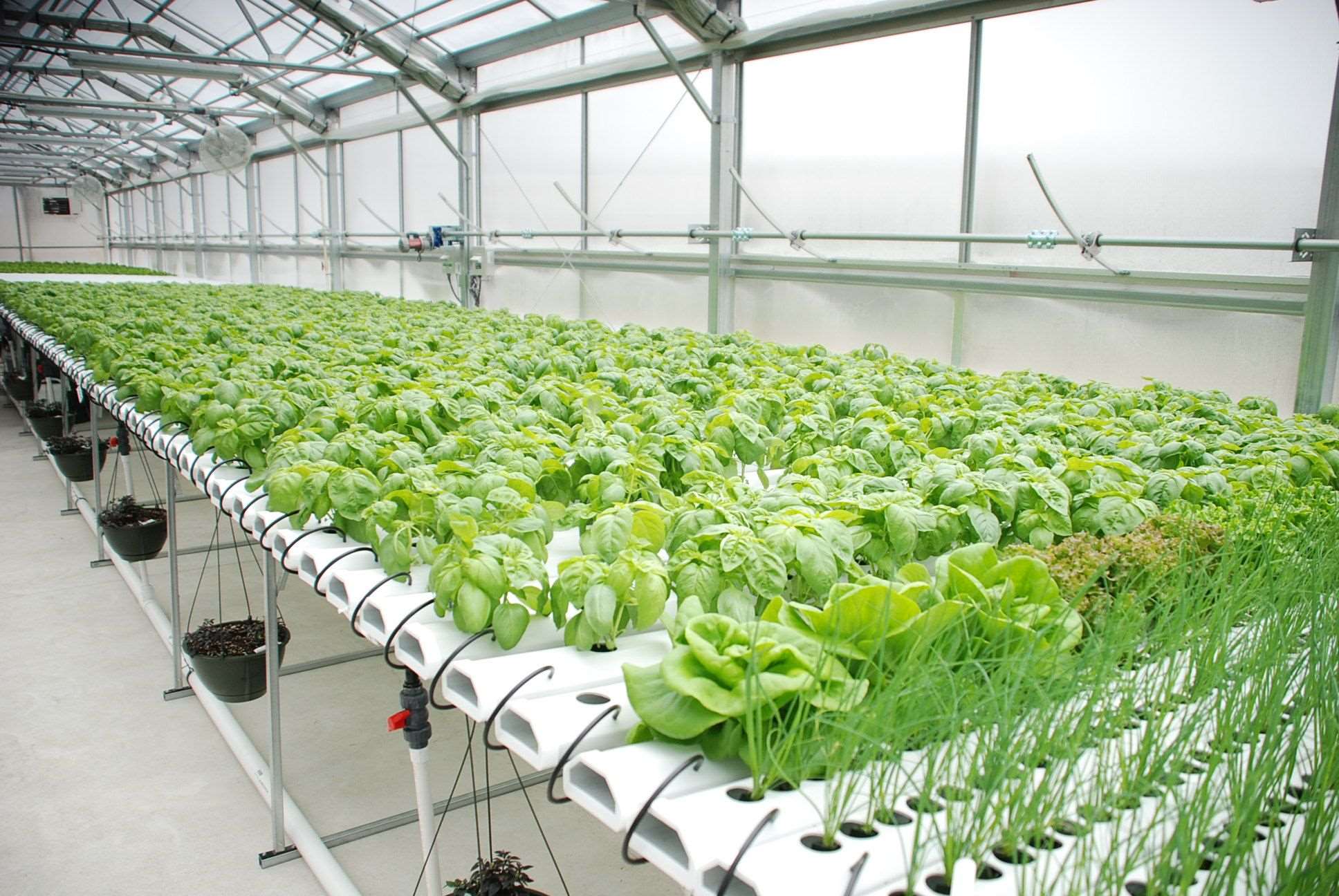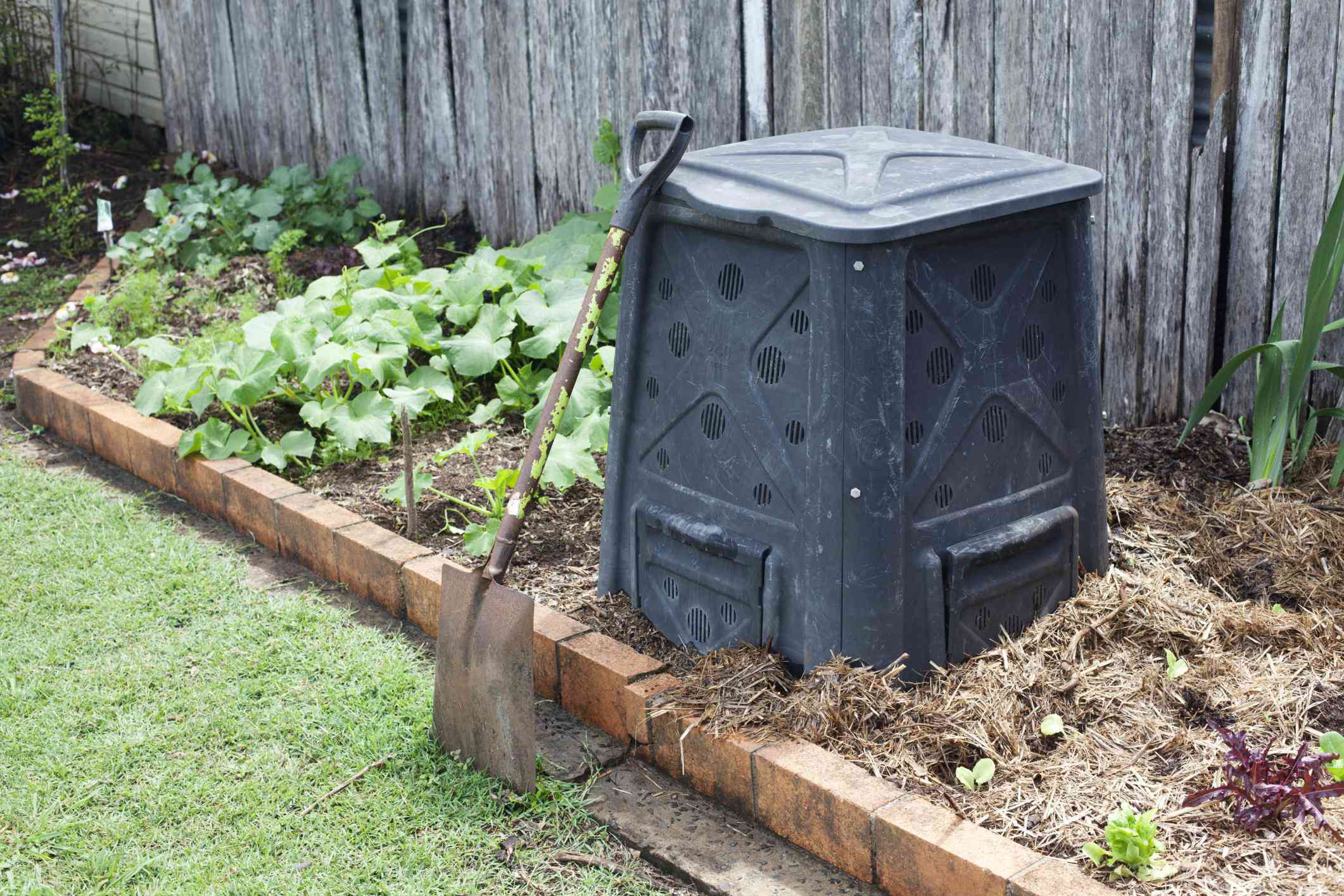Home>Types of Gardening>Edible Gardening>How Fast Do Plants Grow In Hydroponics


Edible Gardening
How Fast Do Plants Grow In Hydroponics
Modified: January 22, 2024
Learn all about the speed of plant growth in hydroponics! Discover the benefits of edible gardening and how it can revolutionize your homegrown produce!
(Many of the links in this article redirect to a specific reviewed product. Your purchase of these products through affiliate links helps to generate commission for Chicagolandgardening.com, at no extra cost. Learn more)
Table of Contents
- Introduction
- Benefits of Hydroponics for Plant Growth
- Factors Affecting Plant Growth in Hydroponics
- Nutrient Requirements in Hydroponics
- Comparing Plant Growth Rates in Hydroponics and Soil
- Plant Growth Rates in Different Hydroponic Systems
- Best Plants for Rapid Growth in Hydroponics
- Tips for Maximizing Plant Growth in Hydroponics
- Conclusion
Introduction
Hydroponics, a method of growing plants without soil, has gained popularity among gardeners and enthusiasts looking for a more efficient and controlled way of cultivating plants. This innovative technique offers numerous advantages over traditional soil-based gardening, including faster plant growth, higher yields, and the ability to grow plants in areas with limited space or poor soil quality.
In a hydroponic system, plants are grown in nutrient-rich water, allowing them to directly absorb the essential elements they need for growth. By eliminating the need for soil, hydroponics provides plants with a more efficient way of accessing nutrients, resulting in faster and more vigorous growth compared to traditional gardening methods.
One of the key benefits of hydroponics is the ability to optimize the growing conditions for plants. The pH level, nutrient concentration, and temperature of the water can be carefully controlled to create an ideal environment that promotes rapid growth and healthy plant development. This level of control is especially beneficial for gardeners seeking to achieve consistent results and maximize the productivity of their edible garden.
Furthermore, hydroponics allows for year-round cultivation, regardless of the climate or season. This means that gardeners can enjoy fresh produce throughout the year, without being limited by external factors that may impact plant growth in traditional outdoor gardens.
Whether you have limited outdoor space, poor soil quality, or simply want to explore an innovative and efficient gardening method, hydroponics offers a promising solution. In this article, we will explore the factors that contribute to fast plant growth in hydroponics, as well as provide tips and recommendations for maximizing the growth potential of your edible garden.
Benefits of Hydroponics for Plant Growth
Hydroponics offers numerous benefits for plant growth, making it an attractive option for gardeners and farmers alike. Here are some of the key advantages of using hydroponics:
- Increased Growth Rates: One of the most significant advantages of hydroponics is the accelerated growth rates it offers. Without the need to search for nutrients in the soil, plants can divert their energy towards growth and development. Additionally, the controlled environment provided by hydroponic systems, including optimal nutrient levels and consistent light exposure, further promotes vigorous plant growth.
- Higher Yields: Due to the precise control over nutrient levels and environmental factors, hydroponics has the potential to produce higher crop yields compared to traditional soil-based methods. This is particularly beneficial for gardeners looking to maximize their edible garden’s productivity within a limited space.
- Water Efficiency: Hydroponics is an incredibly water-efficient method of cultivation. Unlike traditional gardening, which requires large amounts of water to maintain soil moisture, hydroponic systems recycle nutrient-rich water, significantly reducing water consumption. This is particularly crucial in regions experiencing water scarcity, making hydroponics an environmentally friendly choice.
- No Soil-Borne Diseases and Pests: By eliminating soil from the equation, hydroponics provides a clean and disease-free growing environment for plants. Soil-borne diseases and pests that can hinder plant growth and compromise yield are effectively minimized. This reduces the need for harmful pesticides and allows for a healthier and more organic approach to gardening.
- Year-Round Cultivation: Hydroponics allows for year-round cultivation, regardless of climate conditions. With the ability to control key factors such as temperature, humidity, and light, gardeners can ensure optimal growth conditions for plants throughout the year. This means a constant supply of fresh produce, even during the winter months or in areas with unfavorable growing conditions.
Overall, hydroponics offers a range of benefits that enable gardeners to achieve faster plant growth, higher yields, and a more efficient use of resources. Whether you are a hobbyist gardener or a commercial farmer, incorporating hydroponics into your cultivation methods can revolutionize the way you grow your edible plants.
Factors Affecting Plant Growth in Hydroponics
When it comes to hydroponic gardening, several factors play a crucial role in determining the growth and development of plants. Understanding these factors and how to manage them properly is key to achieving optimal plant growth and maximizing your edible garden’s productivity. Here are some of the key factors that impact plant growth in hydroponics:
- Light: Light is an essential factor in plant growth, as it drives photosynthesis, the process by which plants convert light energy into chemical energy. In hydroponics, it is important to provide plants with an appropriate amount and intensity of light. This can be achieved through natural sunlight, artificial grow lights, or a combination of both. The duration and quality of light also play a significant role in plant growth.
- Nutrients: Providing plants with the right balance of nutrients is crucial in hydroponics. Unlike traditional gardening, where plants receive nutrients from the soil, hydroponics relies on nutrient solutions. These solutions are carefully formulated to provide the necessary macro and micronutrients for plant growth. It is important to monitor and adjust the nutrient solution’s composition according to the specific needs of your plants.
- pH Levels: The pH level of the nutrient solution significantly impacts nutrient availability to plants. Different plants have different pH requirements, and maintaining the appropriate pH range is crucial for optimal nutrient uptake. Regular monitoring and adjustment of pH levels are necessary to prevent nutrient deficiencies or toxicities that can hinder plant growth.
- Temperature and Humidity: Maintaining the right temperature and humidity levels is essential for healthy plant growth. Most plants thrive within a specific temperature range, typically between 65°F (18°C) and 75°F (24°C). High humidity levels can increase the risk of diseases, while low humidity can lead to water stress. Proper ventilation and temperature control are vital in ensuring optimal growing conditions.
- Air Circulation: Adequate air circulation is necessary in hydroponics to ensure the proper exchange of carbon dioxide and oxygen. Good air circulation helps prevent the buildup of pathogens and ensures healthy root development. Fans and ventilation systems can be used to maintain consistent airflow within the growing area.
By carefully managing these factors, hydroponic gardeners can create an ideal environment for plant growth and achieve exceptional results. Regular monitoring, adjustments, and attention to detail are essential in maintaining the optimal growing conditions for your plants in hydroponics. Experimentation and learning from experience will also help you refine your hydroponic gardening skills and achieve even better results over time.
Nutrient Requirements in Hydroponics
In hydroponics, plants rely on nutrient solutions as their source of essential elements for growth. These nutrient solutions are carefully formulated to provide the necessary macro and micronutrients that plants need to thrive. Understanding the nutrient requirements of plants is essential for maintaining healthy growth and maximizing productivity in a hydroponic system.
The primary macronutrients required by plants in hydroponics are nitrogen (N), phosphorus (P), and potassium (K), commonly referred to as NPK. These macronutrients are essential for various physiological processes, including photosynthesis, cell division, and root development. In addition to NPK, plants also require secondary macronutrients such as calcium (Ca), magnesium (Mg), and sulfur (S), as well as various micronutrients like iron (Fe), manganese (Mn), and zinc (Zn).
The nutrient solution composition can vary depending on the specific plant species being grown, as well as the stage of growth. Generally, a well-balanced nutrient solution for hydroponics will have a higher concentration of nitrogen during the vegetative growth phase to promote leaf and stem development. As the plant transitions to the reproductive or fruiting phase, a higher concentration of phosphorus and potassium is typically required to encourage flower and fruit production.
Monitoring nutrient levels is crucial in hydroponics to prevent deficiencies or toxicities that can hinder plant growth. Electrical conductivity (EC) and pH meters are commonly used to measure the nutrient concentration and pH level of the solution. The nutrient solution should be regularly tested and adjusted to maintain optimal levels within the recommended ranges for specific plants.
It is important to note that different plant species may have unique nutrient requirements. Conducting research and consulting reliable sources that provide specific nutrient guidelines for different plants can help ensure that you are providing the appropriate nutrients for the plants in your hydroponic system.
Overall, by providing plants with the correct balance of macro and micronutrients in a carefully monitored and adjusted nutrient solution, you can ensure optimal plant growth and development in your hydroponic garden. Regular testing, adjustments, and adherence to specific plant nutrient requirements will help you achieve healthy and thriving plants in your hydroponic system.
Comparing Plant Growth Rates in Hydroponics and Soil
When it comes to plant growth rates, hydroponics often outperforms traditional soil-based gardening methods. The controlled environment and optimized nutrient delivery in hydroponics contribute to faster and more vigorous plant growth. Let’s explore some key factors that contribute to the accelerated growth rates in hydroponics compared to soil:
Nutrient Availability: In hydroponics, plants have direct access to a nutrient-rich solution, allowing them to uptake nutrients more efficiently compared to plants growing in soil. The optimized nutrient delivery eliminates the need for plants to expend energy searching for nutrients, leading to faster growth rates and higher yields.
Root Oxygenation: In traditional soil gardening, the roots often experience limited oxygen availability due to soil compaction and poor drainage. In hydroponics, the roots are exposed to ample oxygen directly from the nutrient solution, facilitating faster root growth and nutrient absorption. This oxygenation of the roots supports overall plant development and encourages rapid growth.
Water Efficiency: Hydroponics is a highly water-efficient method of cultivation. Unlike soil, which can retain excessive amounts of water and lead to waterlogged roots, hydroponic systems deliver water directly to the plant’s roots. This targeted hydration ensures that plants receive the right amount of water, leading to better nutrient absorption and faster growth.
Pest and Disease Control: Soil can harbor various pests, pathogens, and diseases that can hinder plant growth and development. In hydroponics, the elimination of soil removes these potential threats, creating a cleaner and pest-free growing environment. By minimizing the occurrence of pests and diseases, plants in hydroponics can dedicate their energy to growth rather than defense, resulting in accelerated growth rates.
Optimized Growing Conditions: Hydroponic systems allow for precise control over key growing conditions such as light, temperature, humidity, and pH levels. By providing the ideal environment for plant growth, gardeners can optimize these conditions to promote faster growth rates. Consistent lighting, optimal temperature, and carefully balanced nutrient solutions are among the factors that contribute to enhanced plant growth rates in hydroponics.
While hydroponics often offers faster growth rates compared to soil, it’s important to note that the specific plant species, genetics, and careful management of environmental factors can also play a significant role in overall growth rates. Monitoring plant growth, adjusting nutrient levels, and providing the necessary care and attention are crucial to maximizing the growth potential in both hydroponics and soil-based gardening.
Plant Growth Rates in Different Hydroponic Systems
Hydroponics offers a wide range of systems that can be used to grow plants, each with its own unique advantages and considerations. While all hydroponic systems provide faster plant growth rates compared to soil-based gardening, some systems are particularly efficient in promoting accelerated growth. Let’s explore some of the common hydroponic systems and their impact on plant growth rates:
Drip Irrigation System: Drip irrigation is a popular hydroponic system that involves delivering nutrient-rich water to plants through a network of tubes and emitters. This system provides a consistent supply of water and nutrients, promoting steady plant growth. The controlled delivery of water and nutrients ensures optimum nutrient uptake and a faster growth rate, making drip irrigation an efficient system for cultivating a wide range of plants.
Nutrient Film Technique (NFT): The NFT system involves a thin film of nutrient solution flowing over the plant roots, providing a continuous supply of nutrients and oxygen. This system promotes rapid plant growth as the constant flow of nutrient solution ensures optimal nutrient uptake and oxygenation of the roots. The NFT system is particularly suitable for leafy greens, herbs, and small plants that benefit from close contact with the nutrient film.
Deep Water Culture (DWC): In the DWC system, plants are suspended in nutrient-rich water with their roots directly submerged. Oxygen is supplied through air stones or diffusers. This method ensures efficient nutrient delivery and oxygenation, resulting in faster plant growth. The deep water culture system is well-suited for growing large plants such as tomatoes, peppers, and cucumbers, as it provides ample root space for robust growth.
Aeroponics: Aeroponics is a high-tech hydroponic system that involves growing plants in an environment where the roots are suspended in air and sprayed with a nutrient mist. This system ensures maximum oxygen exposure and nutrient absorption, leading to rapid plant growth rates. Aeroponics is especially efficient in growing delicate plants such as lettuce, herbs, and strawberries, as it provides optimal conditions for root development and nutrient uptake.
Vertical Farming Systems: Vertical farming systems, such as tower gardens or vertical hydroponic racks, maximize space utilization and provide efficient levels of light exposure to plants. The vertical arrangement allows for a larger number of plants to be grown in a limited area, resulting in a higher yield and faster growth rates. These systems are particularly suitable for small-scale indoor gardening and urban spaces with limited space availability.
It’s important to note that while these hydroponic systems offer faster plant growth rates, they require careful monitoring and maintenance to ensure optimal conditions. Proper nutrient management, regular water quality checks, and maintaining system cleanliness are crucial for maximizing growth potential. Each system has its own set of advantages and considerations, so it’s important to choose one that suits your plant selection, available space, and gardening goals.
Best Plants for Rapid Growth in Hydroponics
Hydroponics provides an ideal environment for promoting rapid plant growth and achieving high yields. While most plants can thrive in hydroponic systems, some varieties are particularly well-suited for accelerated growth. Here are some of the best plants that exhibit rapid growth in hydroponics:
- Lettuce: Lettuce is a popular choice for hydroponic gardening due to its fast growth rate. Many varieties of lettuce, such as romaine, butterhead, and leaf lettuce, can be harvested in as little as 4 to 6 weeks after planting. Lettuce is also highly adaptable and can tolerate varying light and temperature conditions, making it an ideal choice for beginners.
- Herbs: Many herbs are known for their rapid growth and high productivity in hydroponic systems. Basil, cilantro, parsley, and mint are just a few examples. These herbs can grow quickly and can be continuously harvested throughout the growing season, providing an abundant supply of fresh and flavorful leaves.
- Microgreens and Sprouts: Microgreens and sprouts are harvested at an early stage, typically within 7 to 14 days after planting. These young, nutrient-dense plants are packed with flavor and can be grown quickly in hydroponics. Varieties such as broccoli, radish, and sunflower shoots are among the popular choices for hydroponic microgreen production.
- Tomatoes: Tomatoes are well-known for their robust growth, and they thrive in hydroponic systems. With the right support structure and proper pruning techniques, tomato plants can produce a bountiful harvest in a relatively short period. Cherry and grape tomato varieties are particularly suitable for hydroponic cultivation due to their compact size and fast growth.
- Cucumbers: Cucumbers are another fast-growing plant that flourishes in hydroponics. They require support for vertical growth and benefit from pruning to encourage fruit production. Cucumber plants can be highly productive, yielding a continuous supply of fresh cucumbers throughout the growing season.
It’s important to note that the specific cultivar and the care given to each plant impact its growth rate. Providing optimal growing conditions, including appropriate nutrient solutions, proper lighting, and precise environmental control, will further enhance the growth performance of these plants in hydroponic systems.
Experimenting with different plant varieties and observing their growth habits in hydroponics can be a rewarding experience. By selecting plants that are known for their rapid growth and employing proper hydroponic techniques, you can achieve impressive growth rates and abundant harvests in your hydroponic garden.
Tips for Maximizing Plant Growth in Hydroponics
To achieve maximum plant growth and optimize the productivity of your hydroponic garden, it’s important to implement proper care and management techniques. Here are some helpful tips for maximizing plant growth in hydroponics:
- Ensure Proper Lighting: Plants require adequate light for photosynthesis and growth. Choose the right type of grow lights, such as LED or fluorescent, and position them at an appropriate distance from the plants to provide optimal light intensity and duration.
- Maintain Optimal Nutrient Levels: Regularly monitor the nutrient solution’s composition and adjust it as needed to provide the right balance of macro and micronutrients. Ensure that the nutrient solution is within the recommended pH range for the specific plants being grown.
- Monitor Water Quality: It’s important to use clean, filtered water in hydroponics to prevent the buildup of contaminants and mineral deposits. Regularly check the water source and maintain appropriate levels of dissolved oxygen to ensure healthy root growth.
- Practice Proper Plant Spacing: Provide sufficient space between plants to prevent overcrowding, which can lead to poor air circulation and potential pest and disease issues. Proper spacing allows each plant to receive adequate light, nutrients, and room for growth.
- Prune and Train Plants: Regularly prune plants to remove dead or damaged foliage and encourage new growth. Properly train plants by using trellises or stakes to support vertical growth and optimize light exposure. Pruning and training help promote better airflow and prevent diseases.
- Observe and Adjust Environmental Conditions: Monitor and maintain optimal temperature, humidity, and airflow within the growing area. Use fans or ventilation systems to prevent excess humidity and control temperature fluctuations. Ensuring a suitable environment for plant growth will facilitate healthy development.
- Pest and Disease Management: Implement preventive measures such as regularly inspecting plants for signs of pests or diseases. Introduce beneficial insects or use organic pest control methods to minimize the risk of infestations. Proper sanitation and cleanliness in the growing area are also essential for pest and disease prevention.
- Regularly Monitor and Assess Plant Health: Keep a close eye on your plants, checking for any signs of nutrient deficiencies, nutrient imbalances, or other issues. By promptly addressing any problems that arise, you can prevent them from negatively impacting plant growth and overall yield.
- Maintain System Cleanliness: Regularly clean and sanitize your hydroponic system, including reservoirs, pumps, and growing channels. This helps prevent algae growth, clogs, and potential disease outbreaks. A clean system ensures efficient nutrient delivery and supports healthy plant growth.
- Continual Learning and Experimentation: Hydroponics is a dynamic and ever-evolving field. Stay informed about new techniques, technologies, and varieties that can enhance plant growth in hydroponics. Don’t be afraid to experiment and try new approaches to find what works best for your specific plants and growing conditions.
By implementing these tips and incorporating proper plant care practices, you can maximize plant growth rates, achieve healthy and vigorous plants, and enjoy an abundant harvest from your hydroponic garden.
Conclusion
Hydroponics offers an exciting and efficient approach to edible gardening, allowing for faster plant growth, higher yields, and year-round cultivation. Through the careful management of factors such as lighting, nutrient solutions, temperature, and spacing, gardeners can optimize the growth potential of their plants in hydroponics. With the elimination of soil, hydroponics provides plants with direct access to nutrients and oxygen, resulting in accelerated growth rates and healthier plant development.
The benefits of hydroponics extend beyond rapid plant growth. This innovative gardening method allows for precise control over growing conditions, enabling gardeners to create ideal environments for their plants’ specific needs. Hydroponics also offers water efficiency, pest and disease control, and the ability to grow in limited spaces or areas with poor soil quality.
By selecting the best plants for rapid growth in hydroponics, such as lettuce, herbs, microgreens, tomatoes, and cucumbers, gardeners can further enhance their cultivation success. Implementing proper care techniques, such as providing adequate lighting, maintaining optimal nutrient levels, pruning, and monitoring environmental conditions, can also contribute to maximum plant growth and productivity in hydroponics.
Continual learning, experimentation, and attention to detail are essential in hydroponic gardening. As gardeners gain experience and explore new techniques and varieties, they can refine their practices and achieve even better results. With proper management, hydroponic systems can provide a consistent and abundant supply of fresh, nutrient-rich produce throughout the year.
In conclusion, hydroponics offers a highly efficient and controlled approach to edible gardening, with the potential for rapid plant growth and increased yields. By embracing the principles of hydroponics and implementing the tips and techniques outlined in this article, gardeners can maximize the growth and productivity of their hydroponic gardens, enjoying the benefits of fresh, delicious, and thriving plants.
